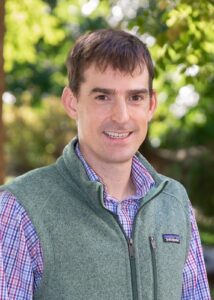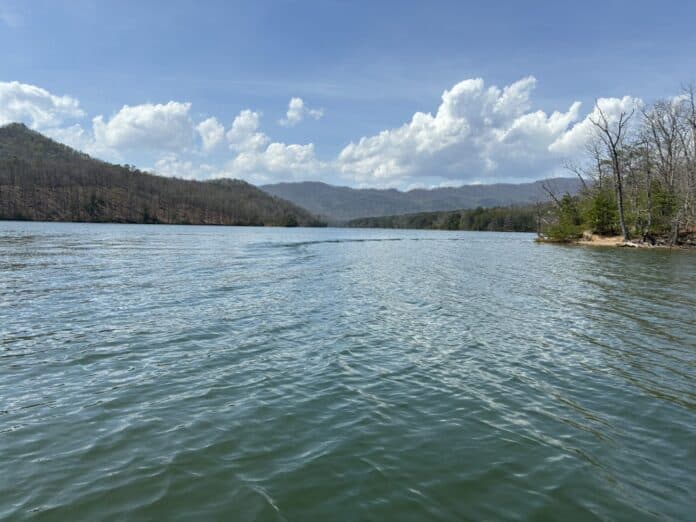Virginia Tech researchers in the Center for Ecosystem Forecasting are expanding their efforts to include terrestrial-freshwater dynamics.
The center research team recently received a $1 million, four-year National Science Foundation grant to better understand how natural hazards impact the forest and soils that control the water quality that ends up in drinking water reservoirs.
Working with the Western Virginia Water Authority, researchers will create a real-time water forecasting model that incorporates the soil and nutrients collected when rainfall drains over land, commonly referred to as a catchment. This process will add a new layer of data to their existing water quality models for the Carvins Cove reservoir in Roanoke.
“This project is about pushing the boundaries and innovation,” said Thomas, professor of forest resources and environmental conservation and lead researcher. “Predictions of the future of water supplies and water quality can help a society plan and protect human welfare.”

Funded under the National Science Foundation’s Confronting Hazards, Impacts, and Risks for a Resilient Planet program, the project will build on the momentum of the water quality forecasting research team to foster a novel understanding of how coupled terrestrial-freshwater dynamics respond to Earth system hazards.
“We’re taking our water quality forecasting to the land,” said Thomas, a data science faculty fellow in the College of Science. “We’re trying to do a more integrated water quality forecasting system that recognizes processes on land that influence both water supply and water quality.”
Thomas said the project was in part a response to the Western Virginia Water Authority’s proactive concerns about the effects of increasing hazards, such as forest fires, floods, and droughts, on water quality. The water authority, with whom the Center for Ecosystem Forecasting has been collaborating since 2013, serves more than 69,000 customers throughout the City of Roanoke; Roanoke, Franklin and Botetourt counties; as well as the towns of Boones Mill and Vinton.
Such hazards can trigger a variety of ecological processes. For example, wildfires increase the release of nutrients from forest soils and change the flow of water, according to Thomas. After the decimation of plants in a fire, there is a decrease in transpiration, which is when plants draw in water through their roots and release it into the atmosphere.
This lack of transpiration results in elevated inflows of water going into the reservoir, and it can change both carbon and nutrient levels. It can result in algal blooms, which pose major threats to water quality via harmful toxins, scums, and changes in taste and odor, and the increased carbon can disrupt treatment processes the water managers use to keep the water clean.
Most water quality forecasting has focused on the influence of hazards on bodies of water separately from their catchments, Thomas said. But this project will create a coupled catchment-reservoir forecasting system that will predict future water quality one day to six months ahead.
“This system will couple terrestrial and freshwater models to fully represent the direct and indirect environmental processes and hazards controlling reservoir water quality,” said Thomas, an affiliate with the Fralin Life Sciences Institute’s Global Change Center.
Along with the real-time measurements and forecasts, the team will use simulations to mimic the ecological processes of the earth hazards to learn the mechanisms that would affect the water quality.
“We’re approaching this with a mechanistic perspective as opposed to a statistical perspective,” Thomas said. “The mechanistic perspective will help us to better understand and learn from the processes, such as what are the levers and the controls, and to learn why those processes are operating the way they are.”
The other team researchers with the Center for Ecosystem Forecasting working on this project include the following:
- Cayelan Carey, professor of biological science in the College of Science
- Madeline Schreiber, professor of hydrogeosciences in the College of Science
- Ryan Calder, assistant professor of environmental health and policy in the Virginia-Maryland College of Veterinary Medicine
By Felicia Spencer


